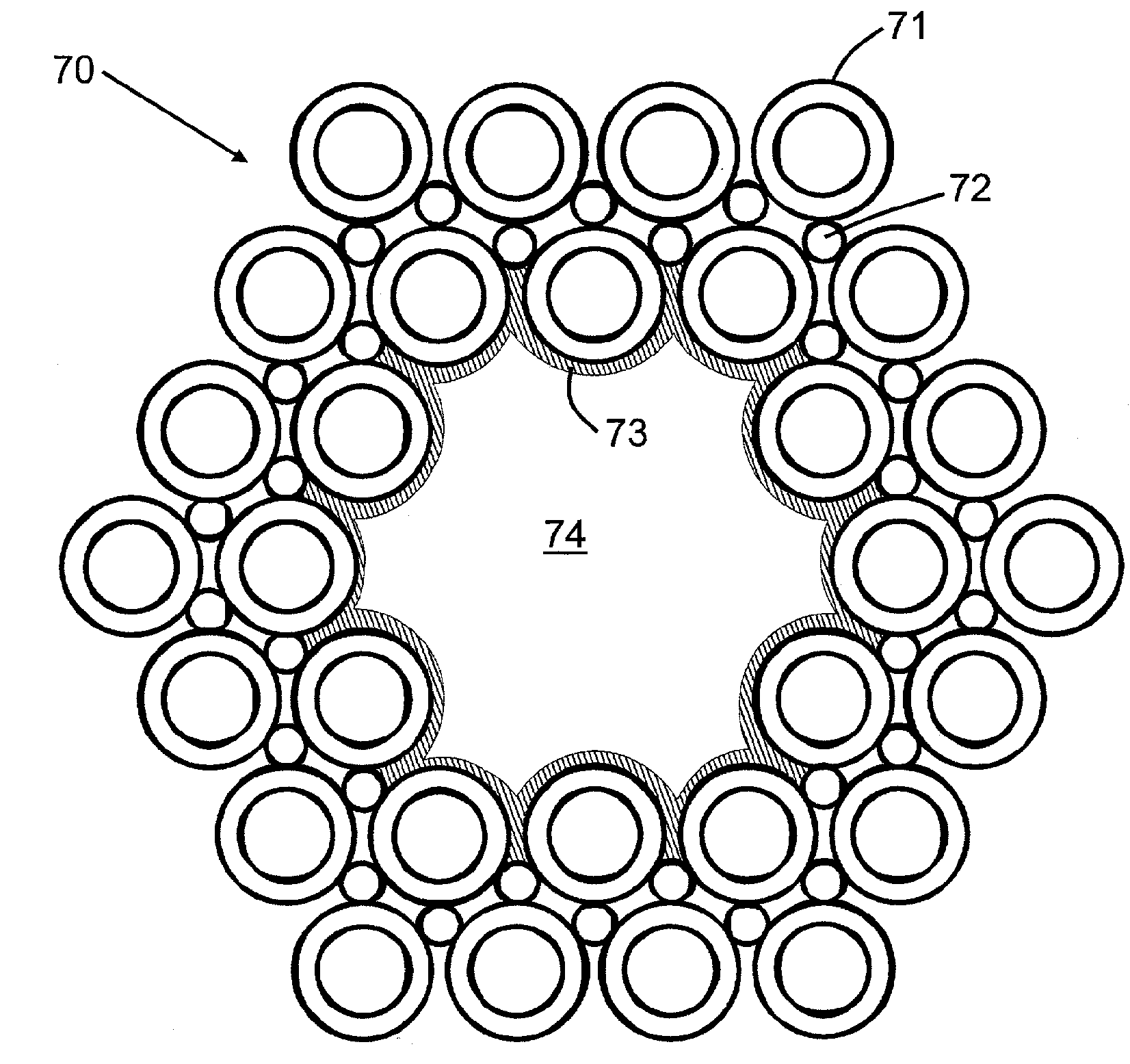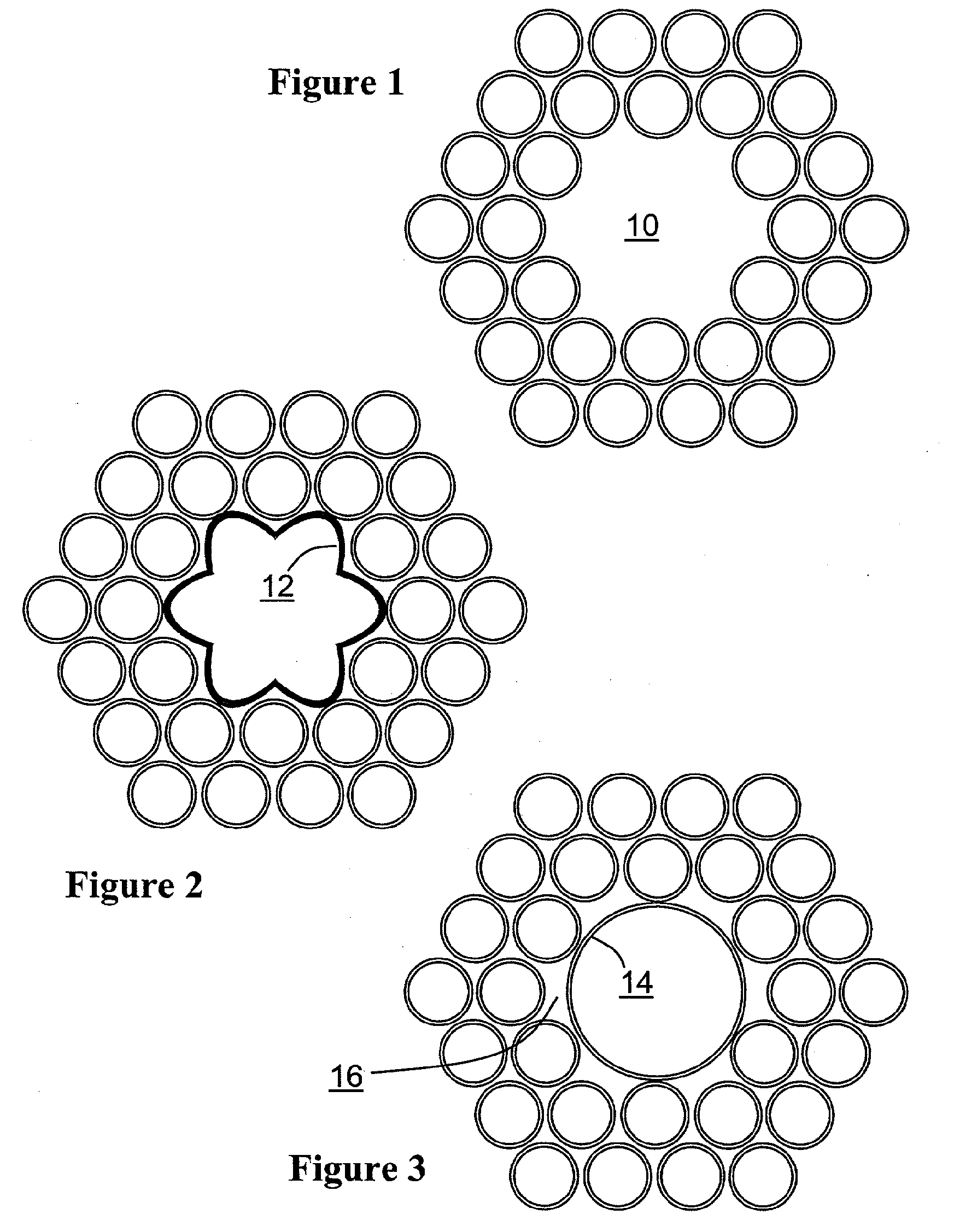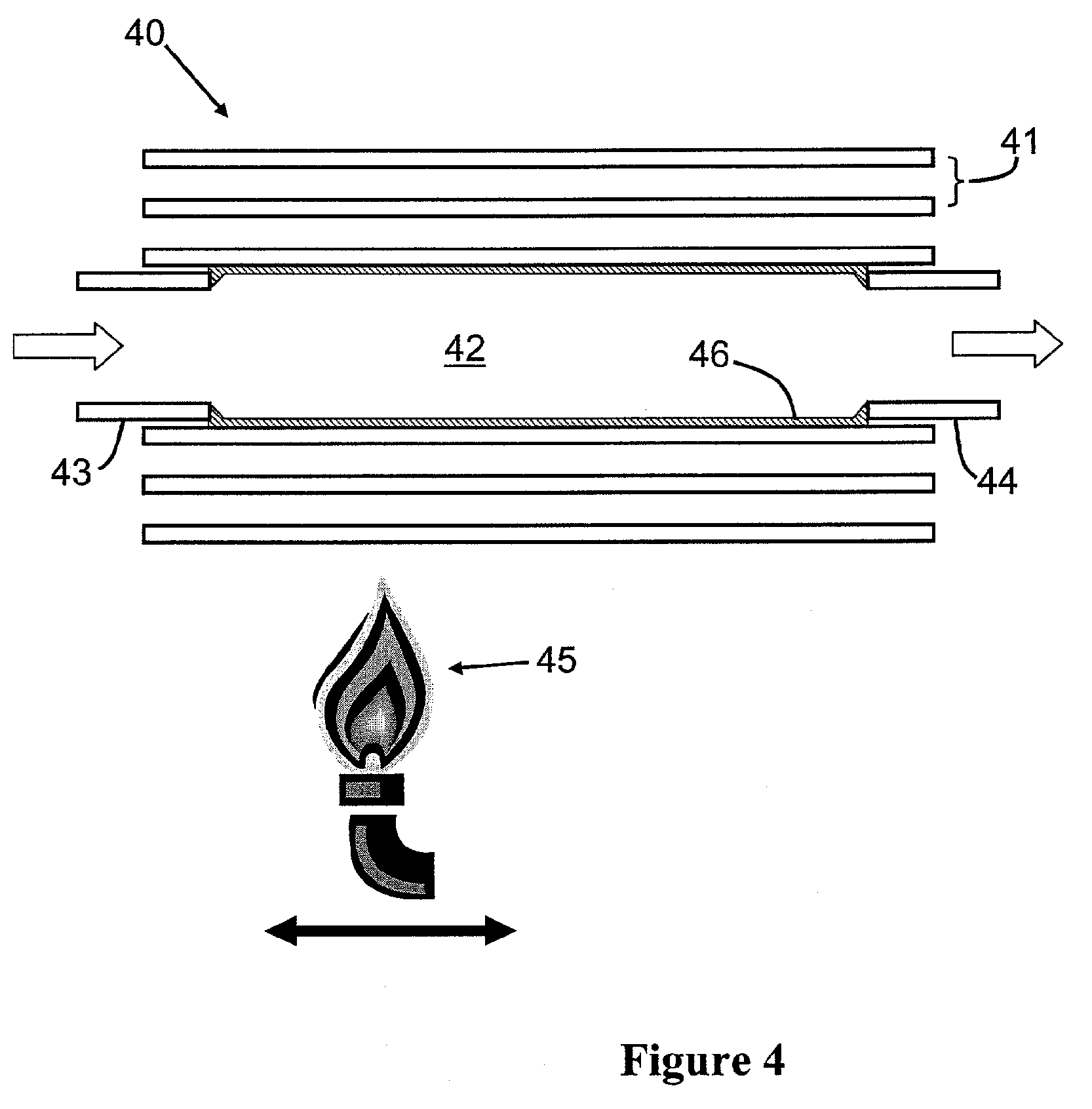An Optical Fiber And Method For Making An Optical Fiber
a technology of optical fibers and optical fibers, applied in the field of optical fibers and methods of making optical fibers, can solve the problems of reducing the mechanical rigidity and support of the cladding, the difficulty of assembling the preform for the hollow core pcf, and the damage to the cladding, so as to reduce the number and/or impact of surface modes, the amount of material used in sealing the crevices or gaps can be sensitively controlled, and the effect of adding additional mechanical rigid
- Summary
- Abstract
- Description
- Claims
- Application Information
AI Technical Summary
Benefits of technology
Problems solved by technology
Method used
Image
Examples
Embodiment Construction
[0042]FIG. 4 illustrates an inner region of a preform stack 40 in longitudinal cross section. The preform stack 40 comprises a plurality of round cross section silica capillaries 41 stacked in a hexagonal close packed arrangement of the kind illustrated in FIG. 1. The capillaries 41—only two layers of which are shown arranged around a core defect region 42—are supported around the core defect at each end of the stack by a short length of large diameter glass capillary tube, 43 and 44. The glass capillary tubes 43, 44 act to support the capillaries 41 around the core defect region 42 and also act as an inlet and an outlet for connection to an MCVD gas supply (not shown). The entire stack is inserted into an over cladding tube (not shown), which is large enough to receive the stack as a sliding fit and small enough that the entire arrangement can be rotated about its longitudinal axis without the capillaries becoming dislocated. Next, the entire over clad stack is mounted on an MCVD l...
PUM
| Property | Measurement | Unit |
|---|---|---|
| pressure | aaaaa | aaaaa |
| lengths | aaaaa | aaaaa |
| refractive index | aaaaa | aaaaa |
Abstract
Description
Claims
Application Information
 Login to View More
Login to View More - R&D
- Intellectual Property
- Life Sciences
- Materials
- Tech Scout
- Unparalleled Data Quality
- Higher Quality Content
- 60% Fewer Hallucinations
Browse by: Latest US Patents, China's latest patents, Technical Efficacy Thesaurus, Application Domain, Technology Topic, Popular Technical Reports.
© 2025 PatSnap. All rights reserved.Legal|Privacy policy|Modern Slavery Act Transparency Statement|Sitemap|About US| Contact US: help@patsnap.com



